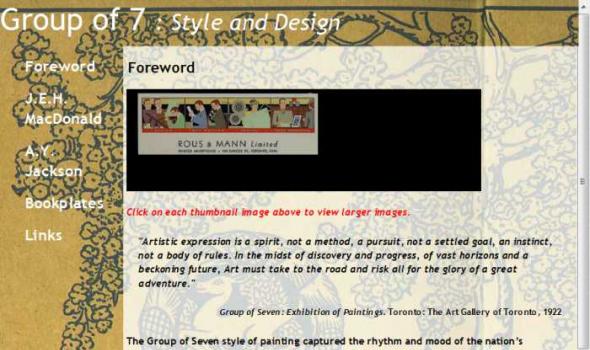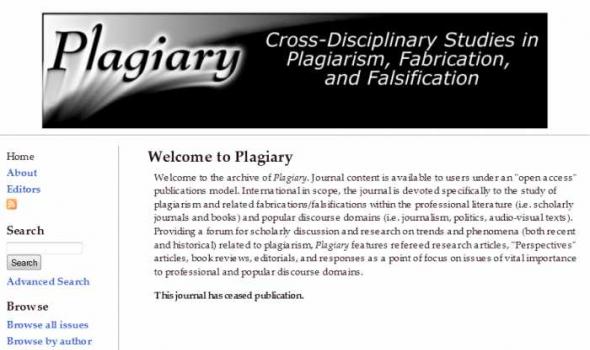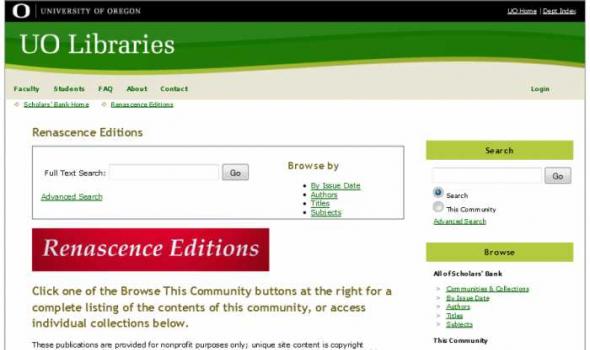Arts
Welcome to the Hoagy Carmichael Collection! This multimedia web site is part of an 18-month project to catalog, digitize, and preserve every item in Indiana University's extensive collections pertaining to the life and career of master songwriter Hoagland "Hoagy" Carmichael (1899-1981). Carmichael grew up in Bloomington, Indiana, and graduated from the Indiana University (IU) School of Law. He composed his enduring pop standard, "Star Dust," in Bloomington, and the story of its creation has become an integral part of local history.
Humanities Text Initiative American Verse Project The University of Michigan Press is collaborating with HTI in an experimental venture to make these materials available to a wider audience over the Internet. The project has several purposes: first, it allows the Press to explore new ways of providing access to World-Wide Web documents. The HTI provides several levels of access to the American verse texts, and guidelines for use (2) are stated clearly at the beginning of each document. Individuals are allowed to use the texts freely, whether to create new editions, distribute to students, or use as a basis for multimedia products.
A project of the Anne S. K. Brown Military Collection Box A, Brown University Library Providence, RI 02912 Tel.: (401) 863-2414 Fax: (401) 863-2093 ASKB@Brown.edu Developed & hosted by Center for Digital Initiatives Box A, Brown University Library Providence, RI 02912 cdi@brown.edu About the Anne S. K. Brown Collection This ambitious multi-year endeavor will digitize the 15,000 individual prints, drawings, and watercolors from The Anne S. K. Brown Military Collection. The artwork vividly documents all aspects of military and naval history, with emphasis on the history and illustration of world military and naval uniforms from the 17th century to the present.
Display of Goya Prints Featured at the NLM Thirteen prints by Francisco Goya (1746-1828) , a Spanish painter who stands among the first modern artists, are on display at the National Library of Medicine. Although Goya held a position as court painter to Spain's King Charles IV, he often mocked the powerful in his paintings and satirized Spain's government and church. His depictions of hospital patients, torture chambers, the poor, and people in complex psychological states, transformed the unmentionable into fit subjects for art. Two of the works are first editions created by Goya, while the others are "restrikes" printed by others using Goya's original plates.
During the depths of the Great Depression of the 1930s and into the early years of World War II, the Federal government supported the arts in unprecedented ways. For 11 years, between 1933 and 1943, federal tax dollars employed artists, musicians, actors, writers, photographers, and dancers. Never before or since has our government so extensively sponsored the arts. MORE... This link is not functional because your browser does not support JavaScript or Javascript has been disabled. Please use this link to MORE...
Introduction by Anne Posega With these words Hanmer voiced England's growing national pride in Shakespeare, a pride materially represented by the numerous editions which were produced in the 18th century. Different editors argued for their textual emendations in prefaces, footnotes, and advertisements, and the debate fueled layer after layer of criticism and responses. In a similar way, the illustrations in these editions were themselves transforming, starting with the first illustrated edition in 1709. Edited by Nicolas Rowe and printed for Jacob Tonson, The Works of Mr. William Shakespear, in Six Volumes was the first edition to be "Adorn'd with cuts". The illustrations in this edition were generally theatrical in nature, with many looking like illustrations of a production.
Depicting Devotion: Illuminated Books of Hours from the Middle Ages December 5, 2001 - February 16, 2002 Curated by Kevin Kalish, Department of English and Christina Linsenmeyer van Schalkwyk, Department of Music Rarely does the opportunity come to peruse, page by page, through a medieval book or manuscript. This exhibit attempts just that. By following the arrangement of this exhibition, the viewer sees the structure and format of a Book of Hours writ large. Books of Hours, one specimen in the history of Illuminated Manuscripts, exhibit a vivid interplay between image and text.
Foreword The Group of Seven style of painting captured the rhythm and mood of the nation???s landscape. From Algonquin to Algoma, Lake Superior to the Rocky Mountains, Quebec to Nova Scotia, the artists traveled in search of the quintessential Canadian landscape painting. Armed with canoes, boards and paints, they interpreted the chaotic mass of nature in a bold, modern approach that differed from the Academic convention. To finance their expeditions, many of the artists worked in commercial art firms, designing illustrations, advertisements and elegant illuminated texts.



























